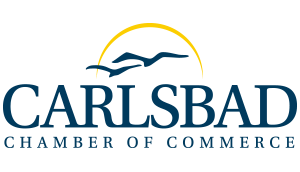Many donors wait until the waning days and weeks of December to do their "philanthropic deeds," often setting off a flurry of activities to volunteer during the holidays, get donations delivered, checks mailed or stocks transferred before the Dec. 31 deadline. Afterwards there is that warm glow, which neural studies tell us is actually a positive physiological response to giving. Researchers even use the term "giver's high" to describe the joys of giving that we experience. Rather than wait until the end of the year, why not create a thoughtful charitable gifting plan and receive the joys of giving all year long.
Here are a few of the many ways you can give and receive;
Current gifts of cash, personal property or highly appreciated assets such as stock or real estate can go to work immediately and you can enjoy seeing the good resulting from your generosity now. The current value of your contribution can be fully income tax deductible up to annual limits, with the excess carried forward, and capital gains tax avoided on the sale of the assets. Contributions to donor advised funds can be recognized now with distributions made later to charitable organizations.
Life income gifts, including various charitable trusts and gift annuities, can provide substantial estate, capital gains and income tax benefits as well as income to you and your family, either now or sometime in the future. Donors may also consider establishing a private foundation or supporting organization, for more comprehensive financial, family and charitable benefits. You might also want to explore donating your home now, while remaining in your home for as long as you like and receiving lifetime income.
Bequests are gifts you can make in your will or living trust, IRA, 401(k) or other retirement plan, annuity or life insurance policy, leaving a legacy to your favorite charities upon your death. Bequests are easy to arrange and your estate can receive a charitable deduction for your gift. Also, income taxes can be forgiven on those donated assets that would otherwise be income taxable to your estate or heirs.
Additionally, there is a new tax law, the Pension Protection Act of 2006 that provides both benefits and reforms to the charitable landscape, with more changes proposed for 2007. One significant benefit allows IRA owners older than 70 and one-half to make non-deductible gifts up to $100,000 per year from IRA assets directly to qualified charitable organizations, without having to declare the amount taken from the IRA as taxable income. The transfer to the charity counts in the donor's annual Required Minimum Distribution (RMD).
There are many variations of these and other strategies that can be customized to help you make charitable gifts from your heart that also benefit your financial and tax situation. Consult with your professional advisors in philanthropy regarding your personal or corporate needs. Careful planning is the key to developing a gifting plan that will maximize the benefits you desire for yourself, your family, your company and your favorite charitable organizations.
Gina McBride, a certified financial planner and philanthropy advisor, speaks and consults on these issues.
Here are a few of the many ways you can give and receive;
Current gifts of cash, personal property or highly appreciated assets such as stock or real estate can go to work immediately and you can enjoy seeing the good resulting from your generosity now. The current value of your contribution can be fully income tax deductible up to annual limits, with the excess carried forward, and capital gains tax avoided on the sale of the assets. Contributions to donor advised funds can be recognized now with distributions made later to charitable organizations.
Life income gifts, including various charitable trusts and gift annuities, can provide substantial estate, capital gains and income tax benefits as well as income to you and your family, either now or sometime in the future. Donors may also consider establishing a private foundation or supporting organization, for more comprehensive financial, family and charitable benefits. You might also want to explore donating your home now, while remaining in your home for as long as you like and receiving lifetime income.
Bequests are gifts you can make in your will or living trust, IRA, 401(k) or other retirement plan, annuity or life insurance policy, leaving a legacy to your favorite charities upon your death. Bequests are easy to arrange and your estate can receive a charitable deduction for your gift. Also, income taxes can be forgiven on those donated assets that would otherwise be income taxable to your estate or heirs.
Additionally, there is a new tax law, the Pension Protection Act of 2006 that provides both benefits and reforms to the charitable landscape, with more changes proposed for 2007. One significant benefit allows IRA owners older than 70 and one-half to make non-deductible gifts up to $100,000 per year from IRA assets directly to qualified charitable organizations, without having to declare the amount taken from the IRA as taxable income. The transfer to the charity counts in the donor's annual Required Minimum Distribution (RMD).
There are many variations of these and other strategies that can be customized to help you make charitable gifts from your heart that also benefit your financial and tax situation. Consult with your professional advisors in philanthropy regarding your personal or corporate needs. Careful planning is the key to developing a gifting plan that will maximize the benefits you desire for yourself, your family, your company and your favorite charitable organizations.
Gina McBride, a certified financial planner and philanthropy advisor, speaks and consults on these issues.
